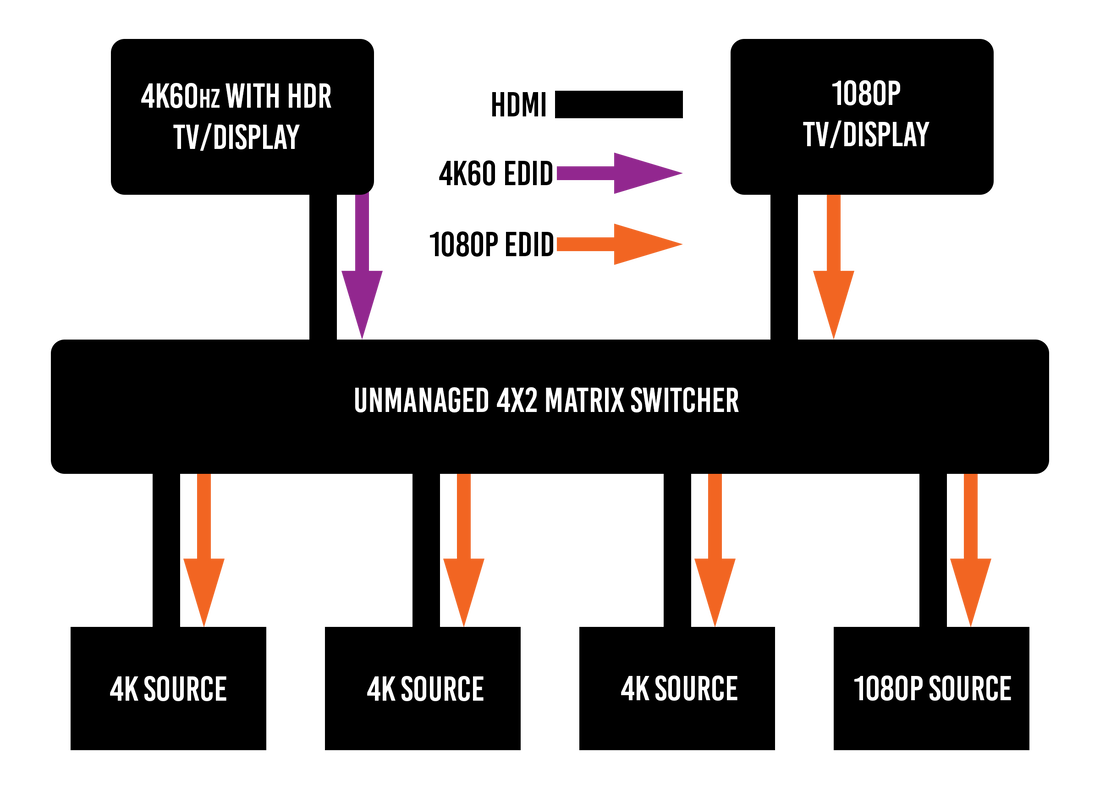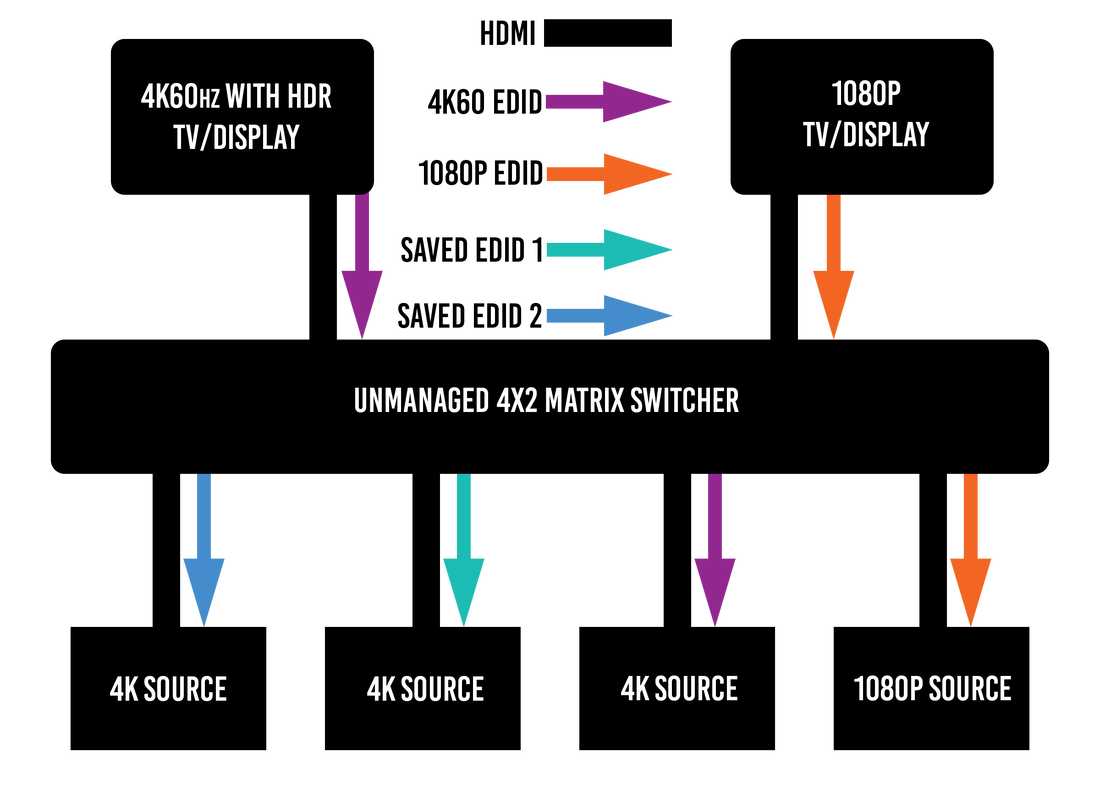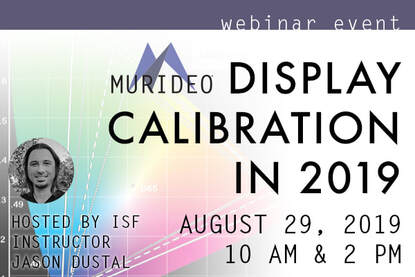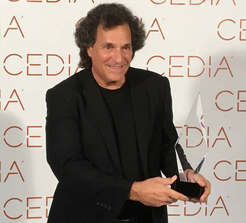|
Our August webinar was a great success and covered Display Calibration in 2019. A big thank you to host Jason Dustal and special guests Vincent Teoh of HDTV Test, Tyler Pruitt of Portrait Displays and Joel Silver of the Imaging Science Foundation. If you missed the webinar check out what's new in the recording below.
0 Comments
For years AV Technology has been plug and play, things just worked.... In today's world of HDMI distribution, things are different. Variables between displays and sources have continued to increase in complexity. Each product has their own detailed specifications that are slightly different than other, similar products. These specifications rely on something called EDID (Extended Display Identification Data). Contained within the EDID information is metadata sending preferred resolution, audio, timing, and a host of other information pertaining to the capabilities of the display. When a source is connected to the display the EDID information is sent back to the source, which will then generate the correct signal. Most displays have a setting that must be enabled to do HDR formats, these settings can change the EDID information.
EDID FlowThe largest problem in distributed systems is the mismatch of EDIDs from different models and manufacturers. AV manufacturers handle these issues in two different ways, unmanaged and managed. In the example below we compare two matrix switchers, a 4x2 with unmanaged EDIDs and a 4x2 with managed EDIDs. Unmanaged EDID
Managed EDID
Once you have an understanding of managing EDID, that knowledge can be used to tackle all kinds of problems both in the field and in design. From shortening sync times, fixing color space, or just getting the best quality audio and video, EDID management can change the whole system. AVPro Edge has made a huge leap forward in EDID Management. Using the AC-DA12-AUHD-GEN2, AVPro has created an EDID Compiler mode which uses the video capabilities of a display or projector and combines it with the audio capabilities of an AVR or soundbar. The DA12 also includes a 1080p downscale port allowing support for a legacy AVR. This can bring Dolby Atmos to your home theater while avoiding AVR limitations and shortening sync times. AVPro Edge continues to push the edge of innovation.
When I started calibrating, TVs and projectors were nowhere near as advanced as they are today. A TV back would only have a few controls and they were usually buried in the minefield of the service menu. Sometimes the controls worked, and sometimes they didn’t. I just had to do my best with what I had to work with. I still run into these situations sometimes, but luckily it’s not often. The difference today is that our equipment and software are light years better and the calibrator community is as big and as strong as ever. I want to invite you to join our newest hour long webinar on display calibration in 2019. I'm going to do a quick refresher for those calibrators that may be a little rusty, then I will talk about all the advancements in imaging science, we will also talk about all the mis-information that is out there as well as what the future holds. One of the most popular videos on our YouTube page is my calibration webinar from last year. But this one will be the most exciting one I’ve done so far. I’ll have 3 special guests on to talk about some of their experiences and what they are looking forward to in 2020 and beyond. Calibration Expert Guests
Want to learn even more?If you haven’t taken the class before, there is not a better time than now. During the ISF class we spend 3 full days covering everything related to electronic imaging and the standards that hold everything together. This includes hands on activities such as fiber termination, front panel TV controls, and manual and automated calibration of the grayscale and color gamut on the displays that we have in class. EDID management and HDCP compliance cause headaches everyday. We will show you how to use the necessary tools to keep track of and manage these things. Not only will you come out of class with a solid foundation of video signals and a new skill, but also CEDIA and AVIXA credits. If you take and pass the ISF exam you will be listed on the ISF site as a certified dealer so potential customers can easily find you.
We see a wide range of students come through the ISF class. Seats have been filled by not only A/V integrators, but also cinematographers, post production editors and colorists, broadcast engineers, medical professionals, even home theater enthusiasts looking to learn. Continuing education in our industry is a MUST, and we invite you to class even if you have taken the course before. |
Third Party Reviews & Articles
SIX-G Generator
Archives
July 2024
Categories |
|
|
© Copyright 2015-2023
Home Contact Us About Us Careers Warranty 2222 E 52nd Street North, Suite 101, Sioux Falls SD 57104 +1 605-330-8491 [email protected] |









 RSS Feed
RSS Feed